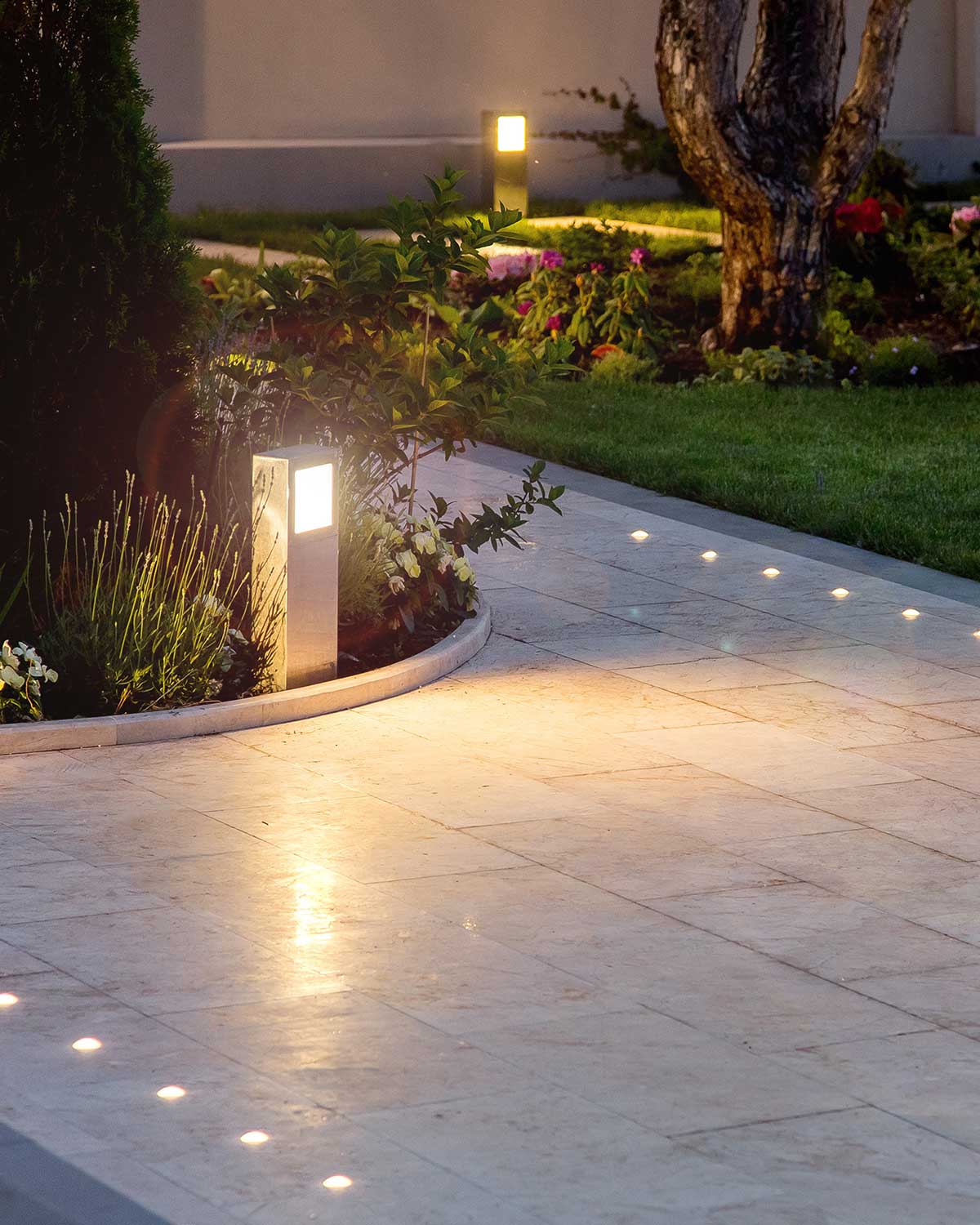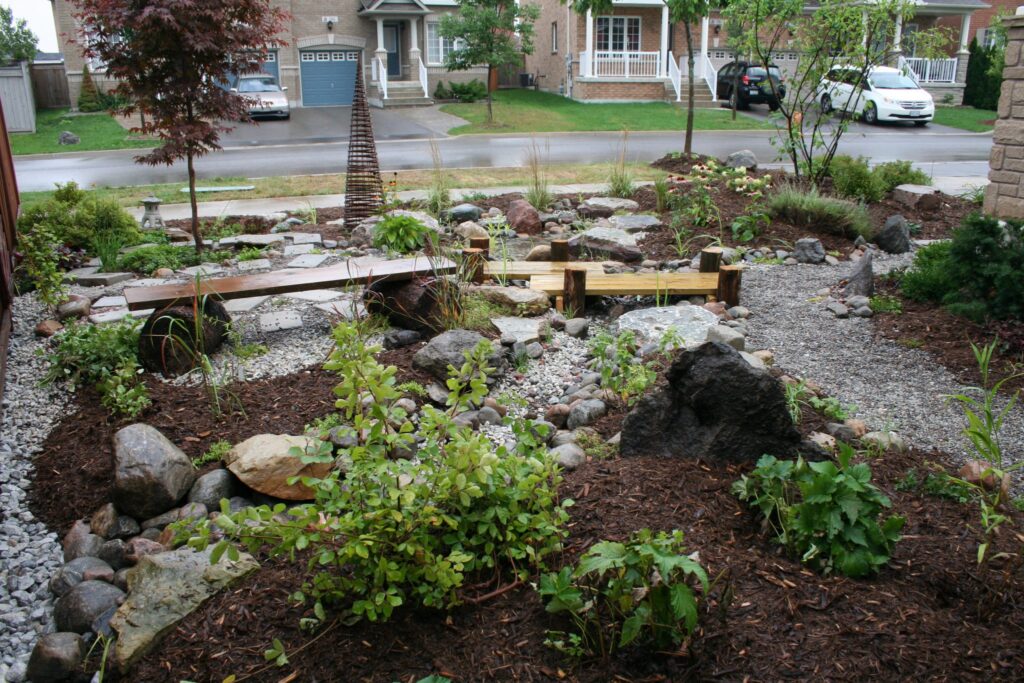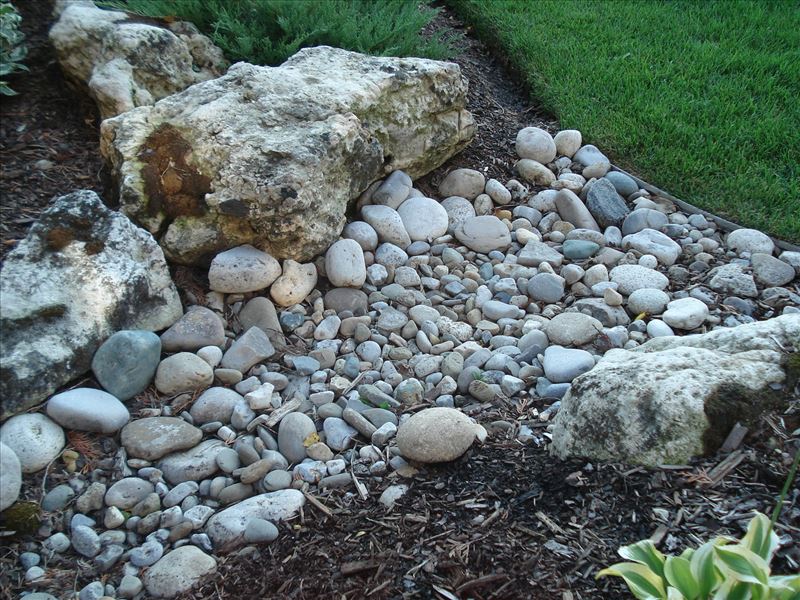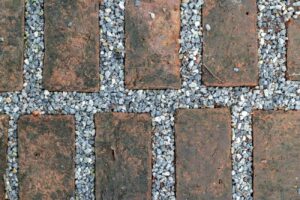If you have backyard drainage problems, you need backyard drainage solutions, and a quick Google search will return millions of results offering advice on everything from trenches and piping to re-grading and French drains. These engineering-driven efforts are important ways to deal with swamping, erosion, flooding and water that’s flowing towards buildings. But if you’re more interested in what the solution will look like from the front curb or your back door, you’ll be happy to read about these three beautiful drainage options, which use landscaping design to solve water problems.
Drainage solution #1: Plant a rain garden
[photo courtesy of Toronto Regional Conservation Authority]
To most of us, a rain garden looks like any beautiful garden bed. But not so fast. It’s in the soil that the magic happens.
Rain gardens are planted at the point where the water in your yard ends up, for example, at the end of a downspout, the base of a slope or the bottom of a swale. It’s important that the site of your rain garden will have standing water for no more than 48 hours to keep the plants healthy.
Site your rain garden at least 9 feet from the nearest building foundation, 12 feet from a septic bed (45 feet if its on a hill above a septic system), and 45 feet from any steep slope to prevent landslides. Mark the garden perimeter using ground paint or string and stakes. Then dig to a depth of almost 3 feet (further if your rain garden is small).
Next, add your magic rain garden soil—a carefully prepared mix of compost and sand that allows water to drain away quickly. Don’t fill your 3-foot-deep hole all the way to the top with soil; the garden height should still be lower than the surrounding area after being covered with 4 inches of mulch, to encourage water to sit in the depression and percolate through the soil. Add small stones where the water will enter your garden and where it will leave if the garden fills and overflow during large storms. Plant native species that don’t mind dry spells and occasional wet feet.
Drainage solution #2: Construct a dry stream
Water features are incredibly popular in backyard designs, but a dry stream is only a water feature when it rains. Broken into its component parts, a dry creek is a shallow trench, lined with landscape fabric, filled with gravel, topped with river rock and edged with boulders. During rainfalls and storms, water travels from its source—a high point in your landscape, your driveway or your downspouts, for example, along the dry stream bed to a discharge point, which is usually a low-lying area that’s appropriate for the water to sit and soak into the ground. You may also find that water usually soaks into the ground along the stream bed and only discharges during large storms.
Create a natural look by designing your dry stream to follow natural contours of your land, widening it and narrowing it at different points, and varying the size of stones and rocks you use. Narrow points should still be around 18 inches wide. Wide points can become basins where water collects and percolates. Plants along the edges will give it an always-been-here look as well. Because streams are part of natural landscapes, a dry stream harmonizes well with a woodland garden. But given the importance of boulders and stones in zen spaces, they work well in minimal and modern gardens, too.
Drainage solution #3: Build a patio out of permeable paving
Hard surfaces, such as concrete, asphalt and tightly packed pavers are found in many of our outdoor landscapes. These surfaces can’t absorb water. Instead, they’re graded to allow water to run off, which can cause drainage issues for homeowners and stormwater management issues for municipalities. Enter the permeable paver: a solid surface designed to allow water to filter through rather than run off.
Prepare your patio area with 12 to 18 inches of crushed stone, lay your pavers with space between them, then fill the gaps with fine aggregate to allow water to immediately seep into the stone below. You can turn traditional interlock pavers, brick and flagstone into permeable pavers by simply adding extra space between each stone or paver. You can also up your permeable pavement game by purchasing special pavers that have a large hole or lattice in the middle where grass or moss can be planted. You can also use permeable paving for driveways and walkways.
We’ve designed and built all three of these beautiful landscapes to solve our customers’ drainage problems. If you’d like to see examples of our work, head over to our portfolio. If you’re ready to take your yard from blah to bliss, download our our backyard design checklist and start planning the backyard of your dreams!

Need inspiration?
When you start to think about designing the perfect yard, deck, patio or backyard oasis, it can be helpful to have some solid ideas of what you want to achieve. We can help with that.



